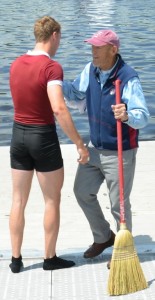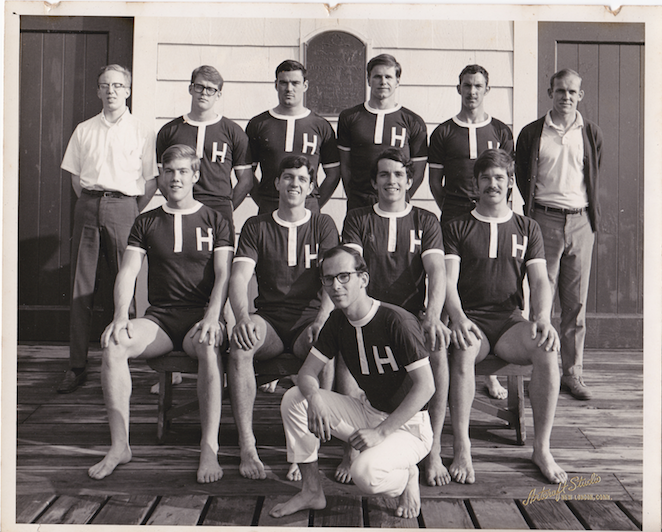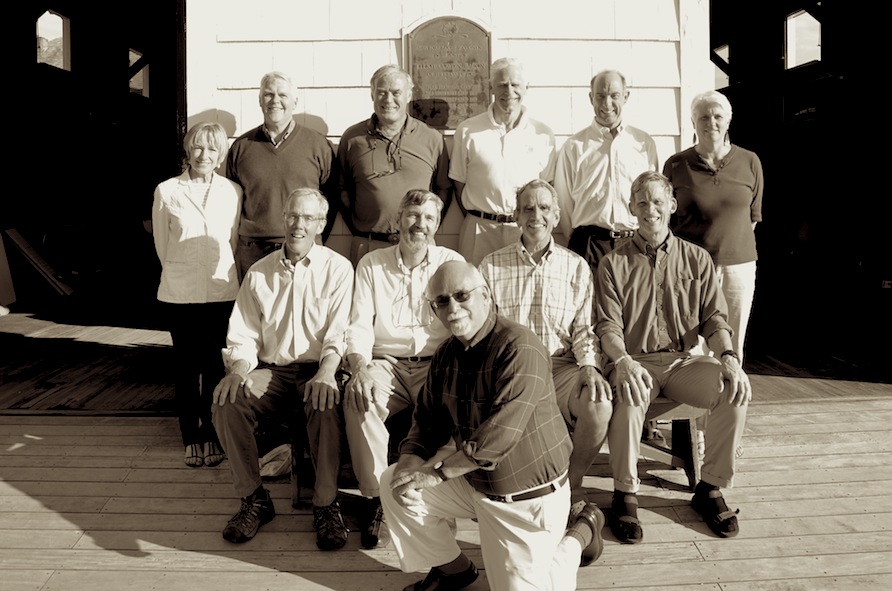
sweeping Yale for his last time.
Harry Parker died this summer, two weeks after coaching the Harvard rowing team to yet another sweep of all four races (varsity, JV, freshmen, and spares) against Yale and two days after accompanying his 1980 Olympic crew on a reunion row. I had the honor of rowing for Harry during the 1966 through 1968 seasons, including the 1968 Olympic Games. (In his 51 seasons Harry coached four other Olympic crews and had 22 undefeated regular seasons, 8 official national championships, 8 unofficial national crowns, and a 44-7 record in the Harvard-Yale four mile regatta including clean sweeps for the last six years.)
Not long after Harry’s 2011 diagnosis of a terminal illness, hundreds of those whose lives he touched gathered to honor him. Speaker after speaker told how Harry had inspired and changed them. Harry, uncomfortable with the praise, had one more bit of wisdom to impart.
“What you think you’ve gotten from me,” Harry said that night, “these are things you learned from rowing.”
The secret of his coaching success, Harry said, came from rowing itself, from the discipline, hard effort, consistency, and commitment that rowing required from us to make the boat go fast. His role was to make it possible for us to learn from the sport.
Which brings me to teaching math, and my realization that what my best teachers did was to enable me to learn from the math. My best teaching has not involved teaching math but rather enabling my students to learn from math.
The Common Core State Standards call for students to persevere, to reason, to argue and critique, to model, to use tools, and to attend to precision, structure, and regularity. Though we can encourage our students in these practices, we cannot enforce the practices. The demand for perseverance, reasoning, and other practices needs to come from the math, not from the teacher.
Our job is to help students recognize that math demands perseverance and argument. To make their mathematical boat go through the water fast and smooth, students must develop and practice good mathematical habits of mind.
Just as an athlete develops physical strength, technical skill, and mental toughness through practice and hard work, so the student herself must reason, master tools, and search for mathematical structure and insight.
Harry’s quiet but authoritative approach emphasized the act of rowing. It made us aware of the level of conditioning and mastery of technique required to make our boat go fast. Similarly, my best teaching presents students with challenging mathematical tasks and prompts them to interact with the mathematical elements of that task to seek out a resolution.
Thinking about Harry’s approach helps me understand why I find Sketchpad so valuable:
Sketchpad enables students to do mathematics.
It puts them in direct hand-eye contact with mathematical objects and requires them to engage in mathematical practices. Instead of reading and hearing about the mathematics, they confront it and learn from it.
They push and the math pushes back.
So the next time someone thanks me for a bit of interesting math they learned in my class or has an aha! moment using Sketchpad, I’ll express my happiness and tell them, “What you think you’ve gotten from me, or from Sketchpad, these are things you learned from the mathematics.”

